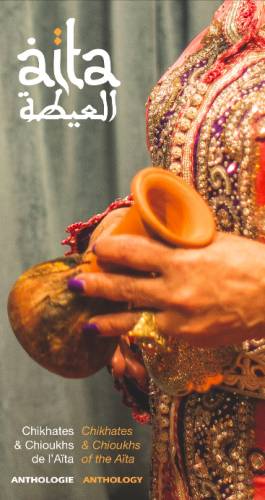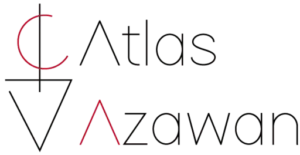The Spirit of Aïta

This art is a mix of Arab art, brought by the conquests of Eastern tribes, and Amazigh traditions. It is hard to pinpoint the exact time when aïta was born. It is a form of Bedouin poetry (q’cida), based on the language it uses. In some cases, it can be linked to Moroccan Arab tribes like the Banû Hilal or Banû Souleim, or those that settled in Morocco at the start of the Almohad Dynasty in the 12th century and blended with the Amazigh culture.
Aïta is a diverse art form with several styles that vary depending on the regions where they emerged. It is not found across all of Morocco, as aïta does not exist in every region. Each version reflects the unique traits of its area, including social traditions, cultural practices, linguistic features, and the natural environment. These elements shape the different styles of aïta. However, the regions of Abda, Chaouia, and Doukkala are the main centers of this oral poetry, where aïta has flourished.
Moussem Moulay Abdellah
The Moussem Moulay Abdellah takes place every year in the El Jadida region, a major center for aïta music. It is an important and eagerly awaited gathering for the Chikhat and aïta music groups, who come here for an annual pilgrimage, preserving ancient traditions and participating in one of the biggest festivals in Morocco.
The Moussem honors Saint Moulay Abdellah, who settled near El Jadida in the 11th century. For an entire week, this usually quiet area becomes the ultimate destination for people from the Doukkala plains and across Morocco. A large tent city forms around the saint’s shrine, and the area becomes vibrant with nonstop festive activity, turning it into a lively temporary town.
The days are filled with moments of celebration and reflection. People come to reconnect with their tribe, meet family, seek forgiveness for their sins, shop, or sell goods in bustling, informal markets. Children enjoy themselves on carousels, while nearby, beautifully dressed horsemen participate in an ancient parade called tbourida. This artistic horse-riding show ends with gunpowder shots and showcases the pride of the region.
At nightfall, the Chikhat take the stage to perform songs that are deeply rooted in the identity of this community. The connection between the audience and the Chikhat, as they sing aïta songs, is a highlight of the Moussem. Dozens of aïta artists from all over Morocco come to celebrate the Moussem Moulay Abdellah, making it one of the most significant events for preserving this musical tradition.
Tbourida inspires Aïta
The deep connection between Aita and Tbourida goes back centuries. Hidden in the shadow of other musical genres, Aita has uniquely supported and promoted Tbourida. Whether by including it in its poetic themes or by being the official music for Tbourida during festivals (moussems), Aita’s songs are considered the only ones capable of accompanying the galloping horses of Tbourida.
Aita Hasbaouia, popular in the regions of Chaouia, Doukkala, and Abda, has given rise to two famous songs dedicated to Tbourida: Rkoub Khayl and Koubbat Ukhayl. The Caids (tribal leaders), being fans of Aita and moussems, naturally embraced this connection. It is even said that the dance accompanying Aita songs is inspired by the movements of horses, where the dance steps mimic the sounds of galloping and the gestures of the riders.
The Aïta and its Territories
The richness of the aita is also connected to its roots in specific regions. Each area has its own unique style. Several types of aita are clearly identified. We have chosen the most vibrant and dynamic ones within their social spaces, like Lhasbaoui. Other types are much less common, and their repertoire is shrinking. There are fewer women in the groups and fewer young people to carry on the tradition, as seen with aita Chaidmia.
1. Aïta Mersaouia
Casablanca, a large Moroccan city located on the Atlantic Ocean and the country’s main economic center, has become a destination for rural people seeking work over time. In the early 20th century, a wave of migration from rural areas to the outskirts of Casablanca occurred. These people settled around the city, especially in the area known as “Marsa,” the port.
The term “aita mersaouia” is often connected to this neighborhood where this type of aita music was born. At that time, life in these neighborhoods was hard, with poorly paid and degrading work.
Unlike in the countryside, where women worked alongside men on farms, in the cities, women were reduced to the roles of mother and wife. Widowed or divorced women were the first victims of this system. When a woman lost her male support, her financial situation became very difficult, especially if she had children to care for. This situation worsened as it became urgent for her to find a job, ideally one that paid well.
The work of “Chikhat” in cabarets provided these women with an opportunity to balance family life during the day and work at night. This is when the “aita mersaouia” style of music was born. The size of the city allowed women to work far from their neighborhoods, away from the eyes of their families and children. The cabarets and entertainment venues became a community for women looking to find their place in an urban life very different from their rural origins. The spread of this style also came from musicians who migrated to Casablanca to entertain workers feeling homesick.
This form of music evolved by adding instruments like the Oud and became the urban successor of the “hasba,” which found new life in places like El Jadida and Settat.
2. Aïta Hasbaouia
The word “Hasbaoui” clearly refers to the territory of Lhasba in the Safi region.
Here, the “aita” (a traditional music style) has been influenced by the social issues that concerned the tribes facing injustice, blending moments of joy with acts of strength and repression. These events also shaped this artistic style, which reflects the life of these tribes. More broadly, Hasbaoui refers to the Abda region, a rich agricultural area, ideal for life and growth. Large celebrations and festivals (Moussems) allowed the “aita” to be expressed, contributing to the richness of the Hasbaoui genre.
The development of the Hasbaoui “aita” was also influenced by the special attention given to it by Caid Si Hmad around 1925, when he succeeded his father, known for his strictness. His father, Caid Aissa Ben Omar, was one of the persecutors of the legendary Chikha Karboucha, who resisted him and became an icon of the Hasbaoui “aita.” She dedicated her songs and rhythms to defending her tribe against the despotism of Caid Aissa Ben Omar. The “aita” owes a great legacy to her.
3. Aïta Jeblia
The Aita Jeblia is popular in the northern region, stretching from Tangier to Tétouan, Chefchaouen, Larache, Ksar Lekbir, and Taounate. It gained fame through chioukh (masters) like Ahmed Lgerfti, Mohamed Laaroussi, Britel, and Lkhmissi.
Aita Jeblia is known for its poetic use of words. The themes often focus on nature and its beauty, as well as life in the mountains. Many songs also have a nationalist tone, defending the country against foreign invaders. The spiritual theme is also present in the Jebli repertoire, often honoring the region’s saint, Moulay Abdessalam M’chiche. Like other parts of Morocco, the aita also honors and celebrates local saints. Today, the Aita Jeblia still has descendants who continue its legacy, including Chikha Chama Zaz, Chikh Hajji Srifi, and the son of Ahmed Lgerfti.
4. Aïta Zaâria
The name Aita Zaâria refers to the region of Rabat-Salé-Zemmour-Zaer and extends to Beni Mellal and Khouribga. Here, the aita takes on a very rich form. It is called Aita Ouardigh in the Rabat area, Aita Mellalia in Beni Mellal, and Khouribguia in Khouribga. All of these are equally rich.
This form of aita is closely linked to agriculture. To celebrate the end of the agricultural season, Moussem festivals are organized where, for the occasion, the songs of the chikhates are performed to the music of Aita Zaâria.
Aita Zaâria is known for using instruments like the violin, taarija (tambourine), ibendir, oud (lute), derbouka, and outar. Aita Zaâria is also characterized by its precise technical rhythm, making it a stage for chikhates to compete with each other, showing off their skills while still maintaining the glamour and joy of the song. Some of the major figures who have helped make Aita one of the most important genres include Chikha Kharbouâa, Chikha Zahra, and Chikh Mohamed Labuak.
5. Aita Chaïdmia
Common in the Chiadma region, a little south of Safi and behind Essaouira, this type of alta seems to have undergone the least transformation. It is little known or even recognized among other types of alta and has a rougher form. The instruments used are very basic, including the Megroune, a kind of double flute made from wood, mounted on a completely handmade frame that only its player knows how to adjust. This type of alta reflects the harshness of life in this area, known for its tough and unkind nature. Yet, it is this same nature that is sung about by these troubadours, witnesses of a bygone era, who continue, we don’t know for how much longer, to bring joy and happiness to those around them. The powerful voice of the singer of the Chaldmia alta rises above the sound of his Megroune instrument.” The Berkhiss group is one of the last heirs of this version of alta, which can be considered the closest to its rural origin.
6. Aita Haouzia
The Alta Haouzia covers the region of Marrakech, Kalaat Sraghna, Rhamna, and Ben Guerir. It is mainly sung by male voices. The Chioukhs (the male plural form of Chikha) also perform dances. The Aita Haouzia is known for its fast rhythm and simple structure. Before the introduction of the violin, it only used the tambourine and the ‘loutar’ (a string instrument). The voice is the main element, and the lyrics are listened to carefully. Like other Aita music throughout Morocco, it often carries a national message, addressing historical topics and issues of activism for the country.
7. Aita Filalia (Beldi)
With Alta Filalia (Beldi), we have a typical example that illustrates the regional variation of falta in Morocco. Covering the Tafilalet region, this aita is closely tied to the figure of Chikh Mohamed Baout. He chose to excel in Tart de raita and moved to Casablanca and Safi to learn from the great masters of Aita Mersaouia. He worked with artists performing before Caid Issa Ben Omar and was taught by his mentor, Bouchaib Lbidaoul. After returning to Errachidia, he blended these styles with the music of his region, such as Lmalhoune and Jerfi. This resulted in the creation of the Alta Filalia (Beldi) genre.
His repertoire includes songs like “Moulate LKhala,” “Selem Ala Lberad Li Sawbouh LBnate,” and “Sakhi Bia.” The originality of Alta Filalia comes from the unique journey of its creator, who also introduced instruments like the accordion and mandolin, which are no longer part of the style. It is important to note that this genre of alta carries a Sahrawi influence from the Filali terroir, making it unique. Deeply committed to his art, Mohamed Baout passed away in Meknès while preparing to perform at the ABC cinema, where his audience was waiting for him.
Today, Alta Filalia remains a valuable heritage cherished by the people of Errachidia. Like other forms of aita, the Beldi genre suffers from a lack of support and transmission. Today, only Chikh Moulay Cherif Lhemri, a devoted disciple of Mohamed Baout’s legacy, continues to preserve this tradition. However, he is not a fan of large stages and gatherings, which prevents the genre from reaching its full potential and connecting with its audience as it deserves.
